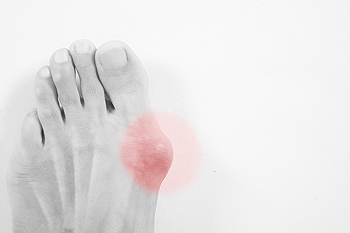What Causes Bunions?
Monday, 19 August 2019 00:00 First and foremost, a bunion is a deformity of the big toe. Typically, it’s a bony protrusion that forms on the side of the big toe. Less commonly, a bunion may form next to the small toe, also known as a “bunionette.” There are many causes for bunions. Tight shoes, especially shoes with a narrow toe box, (ex: cowboy boots and high heels) are the culprits of bunions in most patients. Genetics often play a significant role as well. Experts believe that certain foot types make a person more prone to developing bunions, and these foot types tend to run in families. One study found that 83 percent of people who have bunions have a family history of bunions. It is also said that people who have rheumatoid arthritis and neuromuscular conditions are more prone to bunions. If you feel you have a bunion or you are experiencing soreness, redness, stiffness, and/or swelling around the big toe joint, it is best to consult with your local podiatrist.
First and foremost, a bunion is a deformity of the big toe. Typically, it’s a bony protrusion that forms on the side of the big toe. Less commonly, a bunion may form next to the small toe, also known as a “bunionette.” There are many causes for bunions. Tight shoes, especially shoes with a narrow toe box, (ex: cowboy boots and high heels) are the culprits of bunions in most patients. Genetics often play a significant role as well. Experts believe that certain foot types make a person more prone to developing bunions, and these foot types tend to run in families. One study found that 83 percent of people who have bunions have a family history of bunions. It is also said that people who have rheumatoid arthritis and neuromuscular conditions are more prone to bunions. If you feel you have a bunion or you are experiencing soreness, redness, stiffness, and/or swelling around the big toe joint, it is best to consult with your local podiatrist.
If you are suffering from bunion pain, contact Dawn Miles, DPM of Florida. Our doctor can provide the care you need to keep you pain-free and on your feet.
What Is a Bunion?
Bunions are painful bony bumps that usually develop on the inside of the foot at the joint of the big toe. As the deformity increases over time, it may become painful to walk and wear shoes. Women are more likely to exacerbate existing bunions since they often wear tight, narrow shoes that shift their toes together. Bunion pain can be relieved by wearing wider shoes with enough room for the toes.
Causes
- Genetics – some people inherit feet that are more prone to bunion development
- Inflammatory Conditions - rheumatoid arthritis and polio may cause bunion development
Symptoms
- Redness and inflammation
- Pain and tenderness
- Callus or corns on the bump
- Restricted motion in the big toe
In order to diagnose your bunion, your podiatrist may ask about your medical history, symptoms, and general health. Your doctor might also order an x-ray to take a closer look at your feet. Nonsurgical treatment options include orthotics, padding, icing, changes in footwear, and medication. If nonsurgical treatments don’t alleviate your bunion pain, surgery may be necessary.
If you have any questions, please feel free to contact one of our offices located in Palatka and Saint Augustine, FL . We offer the newest diagnostic and treatment technologies for all your foot care needs.









